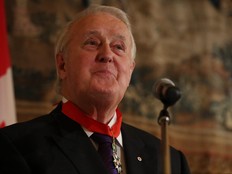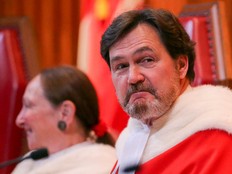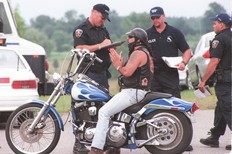GOLDSTEIN: Alberta's separation question, unlike Quebec's, is crystal clear

Article content
Whatever one thinks of Alberta’s separation movement, the referendum question it seeks to pose to Albertans is a vast improvement over those confronting voters in the 1995 and 1980 Quebec referenda on separation.
Proposed by Mitch Sylvestre, chair of the separatist Alberta Prosperity Project, it seeks a “YES” or “NO” answer to the question: “Do you agree that the Province of Alberta shall become a sovereign country and cease to be a province in Canada?”
That would appear to satisfy the first requirement of the federal Clarity Act passed by Parliament in 2000, incorporating the legal advice of the Supreme Court of Canada, that the question on separation must be “clear” to those voting on it.
Particularly so when compared to the question posed to Quebecers in the 1995 Quebec referendum on separation. It read: “Do you agree that Quebec should become sovereign, after having made a formal offer to Canada for a new economic and political partnership, within the scope of the Bill respecting the future of Quebec and of the agreement signed on 12 June 1995?”
While Quebecers are astute followers of politics, understanding this question required knowing, as explained by The Canadian Encyclopedia online, that “the bill” referred to Quebec’s Bill 1, An Act Respecting the Future of Quebec, which included a declaration of sovereignty in its preamble, while “the agreement signed on 12 June 1995” referenced an accord between the Parti Quebecois and the Action democratic du Quebec (ADQ) party, ratified by then-Quebec premier Jacques Parizeau, then-BQ leader Lucien Bouchard and then-ADQ leader Mario Dumont.
The question posed to Quebecers in the first separation referendum in 1980 was even more complex. It read: “The Government of Quebec has made public its proposal to negotiate a new agreement with the rest of Canada, based on the equality of nations; this agreement would enable Quebec to acquire the exclusive power to make its laws, levy its taxes and establish relations abroad — in other words, sovereignty — and at the same time to maintain with Canada an economic association including a common currency; any change in political status resulting from these negotiations will only be implemented with popular approval through another referendum; on these terms, do you give the Government of Quebec the mandate to negotiate the proposed agreement between Quebec and Canada?”
The “NO” side, opposed to separation, won the 1995 referendum by the narrowest of margins — 50.58% to 49.42% for the “YES” side — a winning margin of a mere 54,288 votes out of 4,671,008 valid ballots cast, with a registered voter turnout of 93.52%.
The 1980 Quebec referendum on separation failed by a much wider margin, with 59.56% voting “NO” to 40.44% for the “YES” side — a winning margin of 702,139 votes out of 3,673,843 valid ballots cast, with a registered voter turnout of 85.6%.
In the wake of those votes and, in particular, given the razor-thin vote for the “NO” side in the 1995 Quebec referendum, the 2000 federal Clarity Act specified that in addition to a “clear question,” a “clear majority” of voters was required to decide the issue, without explaining what a clear majority meant.
The proposed referendum question in Alberta still has several legal and political hurdles to clear and faces a competing referendum question asking: “Do you agree that Alberta should remain in Canada?”
That said, it would be hard to fault Alberta’s proposed question on separation for a lack of clarity.













Postmedia is committed to maintaining a lively but civil forum for discussion. Please keep comments relevant and respectful. Comments may take up to an hour to appear on the site. You will receive an email if there is a reply to your comment, an update to a thread you follow or if a user you follow comments. Visit our Community Guidelines for more information.